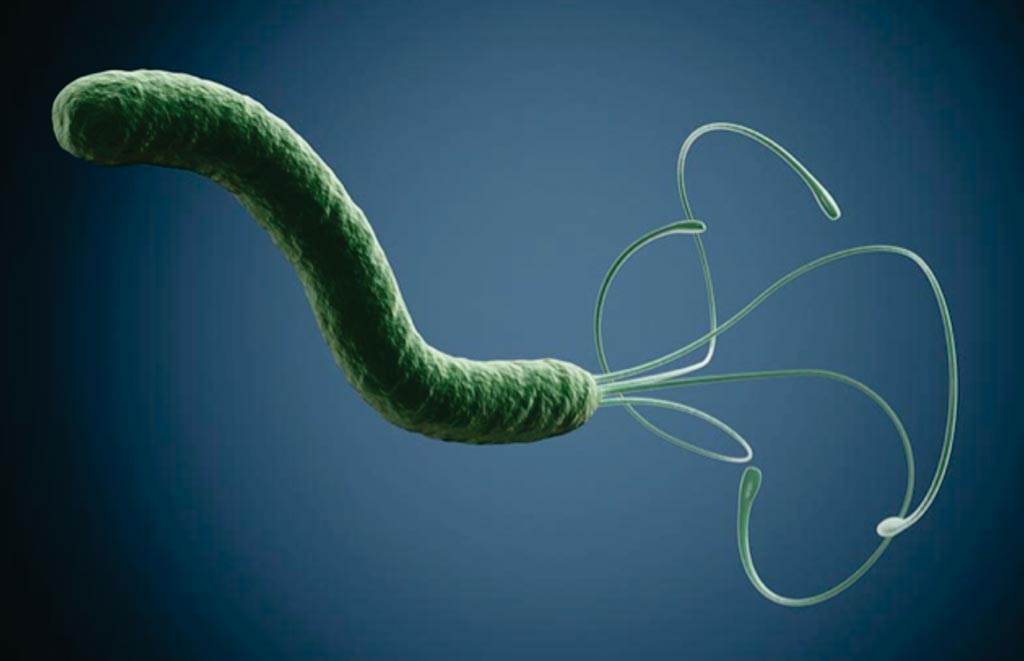Diagnostic Accuracy in H. pylori Fecal Test Assessed
By LabMedica International staff writers
Posted on 15 Aug 2018
Helicobacter pylori (H. pylori) infection occurs among 48.5% of the general population worldwide, with high geographic variability. It is the leading cause of chronic/atrophic gastritis, peptic ulcer, gastric lymphoma, gastric carcinoma, and some extra-gastric disorders.Posted on 15 Aug 2018
Molecular testing is a promising approach for diagnosing H. pylori infection and has the added advantage of identifying bacterial DNA mutations associated with antibiotic resistance and the application of these tests on fecal samples is gaining interest.

Image: Spiral-shaped Helicobacter pylori is the only bacteria known to colonize the human stomach. An estimated 50% of humans harbor H. pylori in their gut, but only some develop ulcers or stomach cancer (Photo courtesy of Boston University).
Gastroenterologists at the University of Bari (Bari, Italy) and their colleagues enrolled consecutive people 18 years or older without previous diagnosis of H. pylori infection, referred for dyspepsia between February and October 2017. At enrollment, all participants underwent 13C-urea breath test. Participants aged over 50 years were scheduled to undergo upper endoscopy with histology. Participants collected stool samples 1 to 3 days after enrollment for a new fecal investigation.
The patients’ samples were analyzed using the THD fecal test equipment, which allows for obtaining an adequate stool-derived product to extract H. pylori DNA. The team pre-specified THD fecal test positivity as the identification of the H. pylori bacterial gene encoding the 23S ribosomal RNA subunit in the stool-derived product. They also used the index diagnostic test to examine mutations conferring resistance to clarithromycin and levofloxacin.
The scientists reported that in the 290 participants who completed the study, the THD fecal test sensitivity was 90.2%, specificity 98.5% , positive predictive value (PPV) 96.5%, negative predictive value (NPV) 95.6%, accuracy 95.9%, positive likelihood ratio (LR) 59.5, negative LR 0.10. Out of 83 infected participants identified with the THD fecal test, 34 (41.0%) had bacterial genotypic changes consistent with antibiotic-resistant H. pylori infection. Of these, 27 (32.5%) had bacterial strains resistant to clarithromycin, three (3.6%) to levofloxacin, and four (4.8%) to both antibiotics.
The authors concluded that their results indicated that the THD fecal test has high diagnostic performance for non-invasive detection of H. pylori infection in patients with dyspeptic symptoms while enabling identification of bacterium resistance to clarithromycin and levofloxacin. On these bases, the THD fecal test may inform clinical decision-making and guide individualized treatments for H. pylori infection. The study was published on July 21, 2018, in the World Journal of Gastroenterology.
Related Links:
University of Bari














